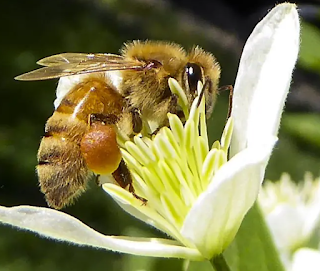The Vital Role of Honeybees: Understanding the Buzz
As concerns about the global bee population escalate, it's crucial to delve into the significance of these pollinators for our ecosystem and our very survival.
Honeybees, belonging to the genus Apis, stand as integral pollinators in our ecosystems, ensuring the reproduction of numerous plant species, including vital crops essential for human agriculture. Despite their small size, honeybees wield immense economic and ecological importance, shaping diverse ecosystems and impacting global food supplies.
In recent times, honeybee populations have faced unprecedented challenges, notably highlighted by the ominous threat of Colony Collapse Disorder (CCD). This phenomenon, marked by the sudden disappearance of worker bees from hives, poses a grave concern attributed to various factors such as pesticides, habitat loss, climate change, and diseases like the Varroa mite infestation.
Contrary to common misconceptions, honeybees are not inherently aggressive. Unlike their predatory counterparts like wasps and yellow jackets, honeybees exhibit a defensive behavior, stinging only in exceptional circumstances, and sacrificing their lives in the process. Understanding the dynamics of bee encounters dispels unwarranted fears and emphasizes the need for coexistence and conservation efforts.
The decline of honeybee populations reverberates beyond the confines of hives, extending to threaten global food security. Approximately one-third of the food consumed daily relies on bee-mediated pollination, encompassing a spectrum of fruits, vegetables, and nuts crucial for a balanced diet and sustainable agriculture. The ripple effects of dwindling bee populations resonate across agricultural landscapes, posing tangible risks of diminished crop yields and potential food shortages.
In light of these challenges, concerted conservation efforts are imperative to safeguard honeybee populations and mitigate the adverse impacts of their decline. Reducing pesticide usage, fostering bee-friendly habitats through sustainable agriculture practices, and advocating for ecosystem preservation emerge as pivotal strategies in fostering bee resilience and ensuring food security for future generations.
The plight of honeybees transcends species preservation; it embodies a broader commitment to nurturing biodiversity, preserving ecosystems, and fostering resilient agricultural systems. Embracing these principles underscores our collective responsibility in safeguarding the delicate balance of nature and securing a sustainable future for generations to come.
Frequently Asked Questions (FAQs):
1. What is Colony Collapse Disorder (CCD), and what factors contribute to it? Colony Collapse Disorder (CCD) is characterized by the sudden disappearance of worker bees from hives, attributed to factors such as pesticides, habitat loss, climate change, and diseases like the Varroa mite infestation.
2. How do honeybees contribute to global food security? Honeybees play a crucial role in pollinating approximately one-third of the food consumed daily, including fruits, vegetables, and nuts, essential for a diverse and nutritious diet and sustainable agriculture.
3. What steps can individuals take to support honeybee conservation efforts? Individuals can contribute to honeybee conservation by reducing pesticide usage, cultivating bee-friendly habitats through sustainable gardening practices, and advocating for ecosystem preservation and sustainable agriculture.
4. Why is preserving honeybee populations essential beyond species preservation? Preserving honeybee populations is vital for maintaining biodiversity, ecosystem balance, and sustainable agricultural systems, ensuring food security and environmental resilience for future generations.
#Honeybees, #Pollinators, #ColonyCollapseDisorder, #FoodSecurity, #ConservationEfforts

